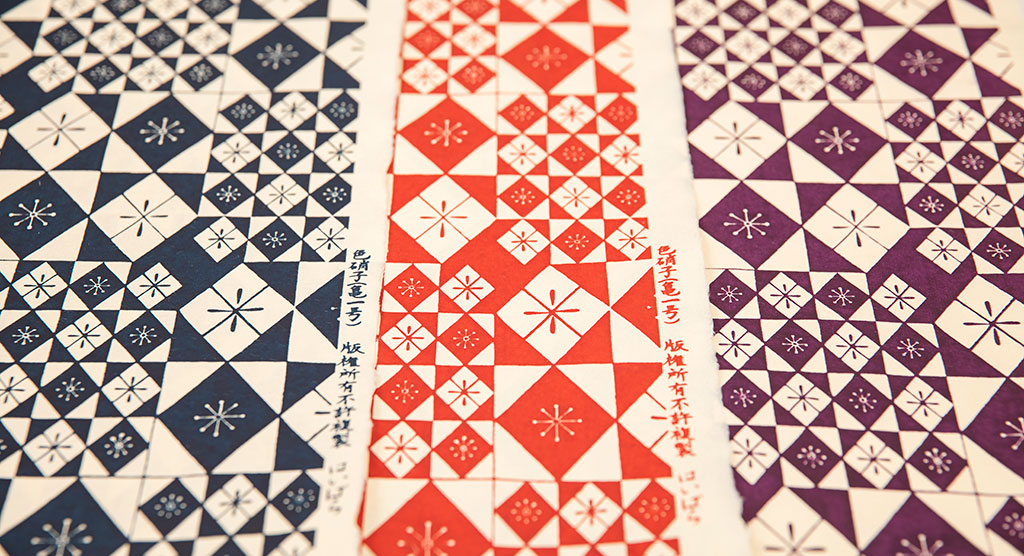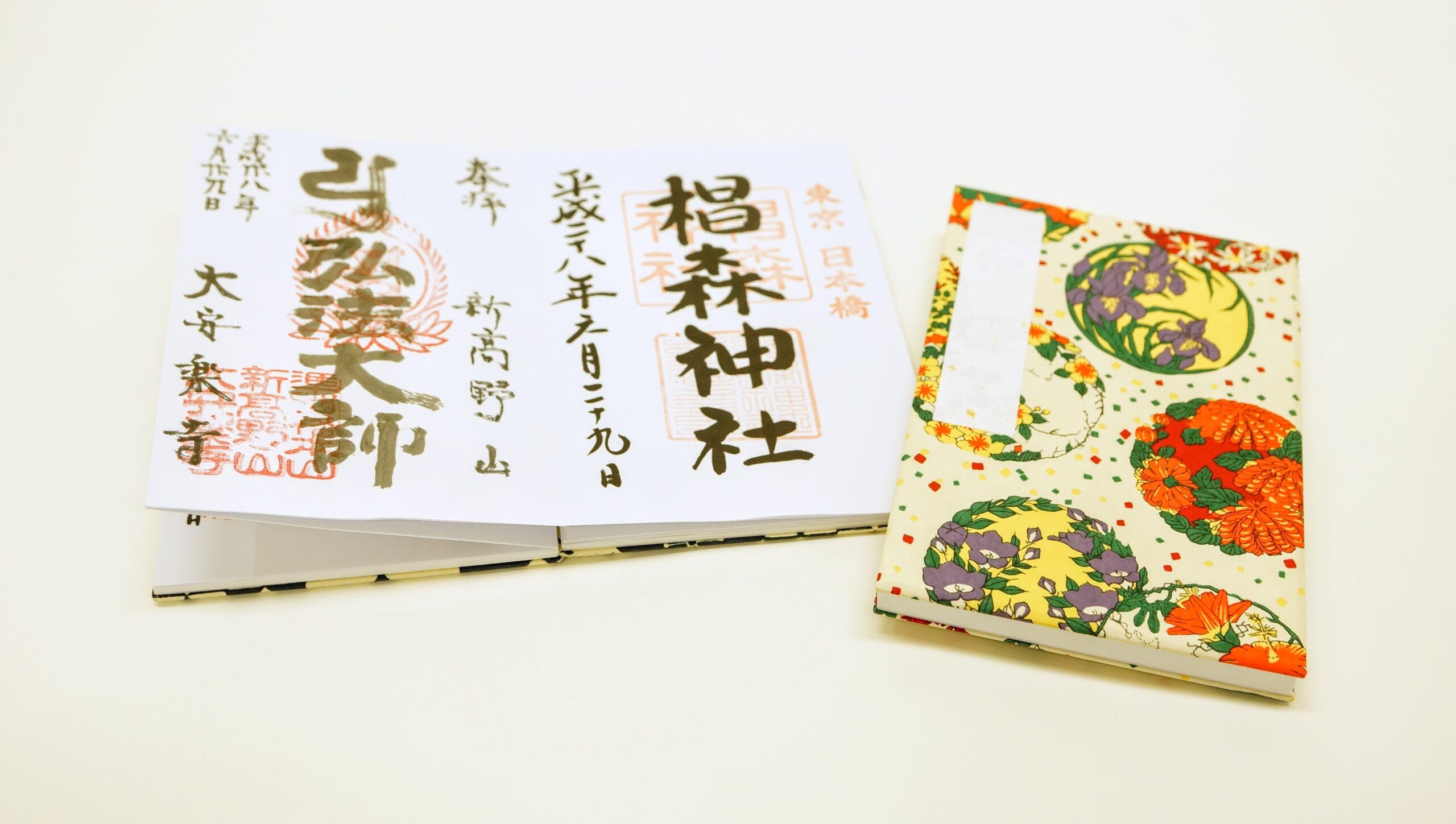Table of Contents
- Chiyogami wrapping paper expresses warmth to a gift.
- Paper (God) resides in the details. Haibara’s “washi” is of high quality and beauty.
- Hoshoshi is washi for “conveying important things.”
- Haibara chiyogami with gorgeous colors such as flowers, auspicious patterns, and geometric designs
- The joy of “using” as well as “displaying and viewing” into daily life
Chiyogami wrapping paper expresses warmth to a gift.
I found a delicious red wine at my favorite liquor store. While enjoying it relaxingly at home, I came up with the idea of giving it as a gift to my friend who had been nice to me.
I purchased it right away, but it looked a bit tasteless with the store wrapping paper. I wondered if there was any easy and impressive way to wrap it.
I then remembered how to wrap using Haibara chiyogami, which I learned from a Haibara shop staff. The method is quite simple. Select chiyogami paper with a chic pattern that matches the color of red wine. Wrap it around the wine bottle and tie a ribbon over it. It’s so easy, yet it adds gorgeousness and warmth, making it an excellent and heartfelt gift.
Paper (God) resides in the details. Haibara’s “washi” is of high quality and beauty.
Haibara chiyogami is washi (Japanese paper) printed with colorful patterns of vivid colors.
So, if you want to talk about the charm of chiyogami, you must first know about washi. So, we focus on “washi,” synonymous with Haibara.
Since its establishment in 1806, Haibara has consistently dealt with washi. Haibara puts together high-quality, beautiful, and chic washi from all over Japan from the Edo period to the present.
Traditional Japanese paper is made from plants such as gampi, mitsumata, and kozo. The artisans make and dry each sheet of washi by hand through multiple processes, including peeling the thin skin just below the outer layer, boiling and softening it, and beating it to loosen the fibers.
As the saying goes, “paper (God) resides in the details.” Through careful handmade work, plant fibers are intricately intertwined to produce a high-quality paper that is both beautiful and strong.
Gampi-shi, with its delicate and smooth texture, attracted the attention of the Edo people. They found it easy to write beautiful letters with a brush, and it became a very popular product then. The name “Gampi-shi Haibara” soon rose to fame.

Hoshoshi is washi for “conveying important things.”
Looking around the Haibara store, I noticed there are many different types of washi, including Gampi-shi, Gasen-shi, Echizen-shi, and Mino-shi.
When I picked up some of them, I discovered they have different appearances and characteristics, such as fine-textured paper with a smooth surface, smooth and shiny paper, and a natural and gentle texture.
The staff member said, “In recent years, many of our customers have been looking for simple Hoshoshi,” to which I involuntarily replied, “What’s Hoshoshi?”
Hoshoshi is a washi used to convey important messages. It is also called “Hoshogami,” said the kind staff member, showing me the actual paper.
Oh, what a beautiful and dignified wash! It is robust, supple, and classy. It is not just a paper. It seemed to be a highly prestigious washi used for official documents of the shogunate from the Middle Ages to the early modern period. It came to be called “Hosho” to refer to “a letter for giving the command.”
Even today, Hoshoshi has inherited the role of “conveying important things.”
It is used in various aspects of our daily lives, such as writing congratulatory messages or eulogies, wrapping congratulatory or incense money, and as noshi paper.
Haibara chiyogami with gorgeous colors such as flowers, auspicious patterns, and geometric designs
Now that I learned the appeal of washi, take another look at chiyogami, and I was amazed at the creativity of washi.
During the Edo period (1603-1867), with the advancement of printing technology that enabled mass production, chiyogami became popular among the general public. People at that time enjoyed using their favorite chiyogami in various ways. For example, they used it for toy paper dolls, pasted it on small boxes and tubes, and folded it into their favorite shapes. It is not only enjoyed by the general public, but there is also a record that Haibara was commissioned by the shogun and feudal lords to create their own patterns called “Otomeban” using chiyogami.
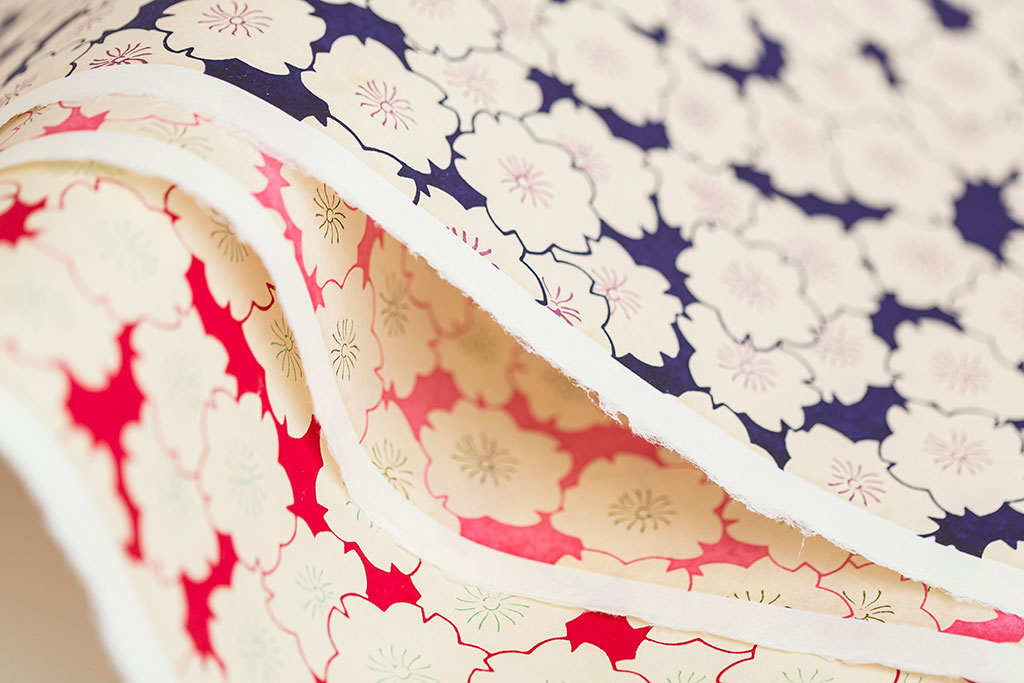
The vivid, pop-colored Haibara chiyogami sold in Haibara stores today is an original Haibara design from the Meiji and Taisho periods. Many artists, including Kawanabe Kyosai and Kawabata Gyokusho, who were among the most famous painters of their day, designed the underpainting.
Based on the drafts the painter drew, dyeing artisans lay down colors on the washi paper to create chiyogami. In the case of multicolor printing, as many plates as the number of colors are needed. Artisans dye each color carefully by hand to ensure that the colors do not shift. Applying many dyes on the paper allows for deep colors that modern machine printing cannot produce.
The gorgeous chiyogami is filled with the artisans’ skills and spirit.
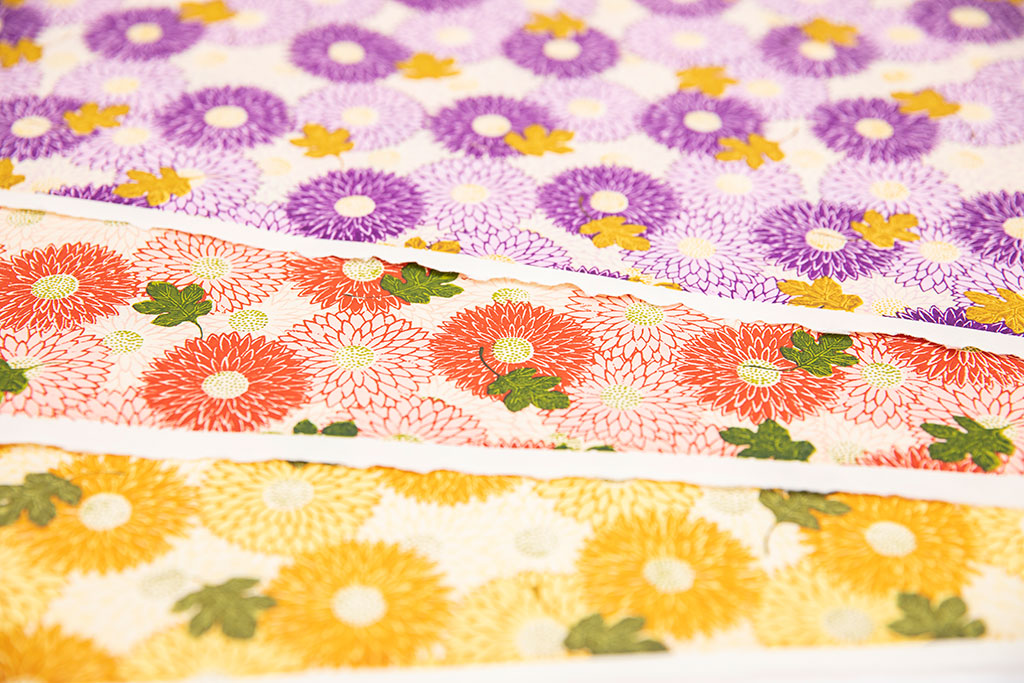
The joy of “using” as well as “displaying and viewing” into daily life
The popular “Chou-you” pattern, based on the chrysanthemum flower motif, the impressive geometric design of “colored glass,” which is used on the exterior of Haibara stores, and the “Kazemachi-gusa” pattern, a reproduction of a precious “Ise-katagami” pattern – these are just a few examples of the beautiful designs of Haibara chiyogami. Looking at Haibara chiyogami’s beautiful designs is an exciting experience. I am sure many people feel the same way. I also used to just “look” at it.
“If you think chiyogami is lovely, please don’t just appreciate it, but try using it daily. You will find new charms in using it,” said a Haibara staff member with a smile.
You can use it as wrapping paper like the wine bottle wrapping as described first, as a book cover with your favorite pattern, as a pasting on an empty box, or as an interior decoration in a frame. The ideas are endless depending on how you use it.
Chiyogami is a work of art that conveys the beauty of Japan. By incorporating chiyogami into your daily life and using it, your everyday life will become more enjoyable and attached to it.
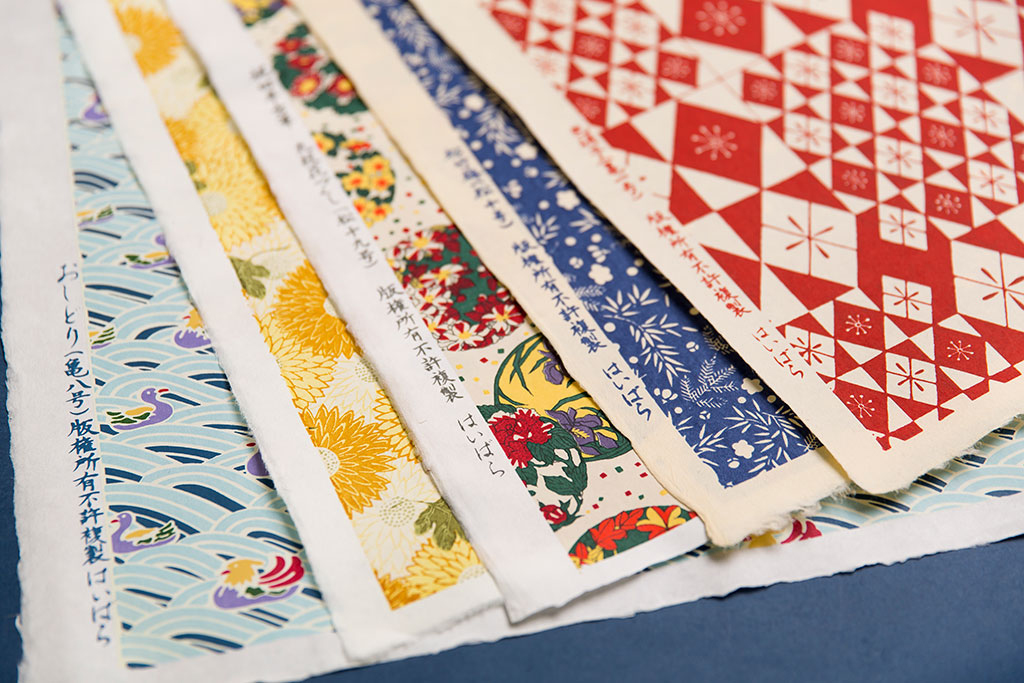














 Instagram
Instagram facebook
facebook X(旧Twitter)
X(旧Twitter) Youtube
Youtube note
note